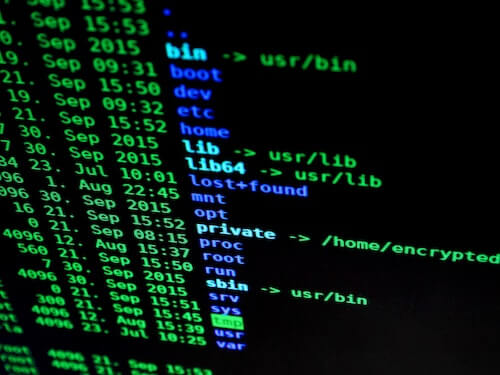How Microsoft Protects Your Company Email
Thanks to new security updates, Defender now protects Microsoft email. Find out what the new security features are and how to get them for your...
Remote and hybrid work paved the way for new levels of flexibility and agility for organizations. Companies can expand ...
Remote and hybrid work paved the way for new levels of flexibility and agility for organizations. Companies can expand their recruitment efforts and there is a reduced need for commercial office space. However, allowing remote access to corporate data has also introduced a greater degree of risk for data breaches. Zero trust has emerged as one of the leading solutions companies rely on to protect networks and sensitive data.
 What Is a Zero Trust Framework?
What Is a Zero Trust Framework?The old approach to cybersecurity involved creating a perimeter around your network and trusting anyone inside it. The new model treats all users as external actors. The system authenticates and authorizes each request before granting access and assumes a breach as the default. This means every user must undergo rigorous authentication measures, such as the following:
Microsoft has implemented a comprehensive security strategy to protect its cloud environment and secure remote work. The tech giant worked directly with Traced Mobile Security to meet its goals and extend protection.
Traced joined the Microsoft Intelligent Security Association and developed Trustd MTD. This technology integrates with Microsoft Entra and Microsoft Azure Active Directory to deliver the following benefits:
Organizations must take a zero trust approach to protecting all devices used to access corporate networks and data. This includes devices owned by employees working from home. In the past, companies often overlooked the security of mobile devices, which created vulnerabilities that hackers explored. Thousands of companies learned the hard way that their networks were only as safe as the most unsecured endpoint. It was only a matter of time before that device could provide a gateway to corporate data.
Organizations can reduce the risk of data breaches, malicious attacks, and other digital threats with an effective mobile security strategy. Microsoft’s implementation of Trustd MTD is an excellent example of how companies can leverage this technology to stay secure.
Mobile security has generated increased interest over the past few years. The exponential growth in BYOD policies and overall phone use at work played vital roles. However, Microsoft has looked well beyond this to introduce a robust security model across the board. Its efforts include the following examples:
Microsoft’s Advanced Threat Analytics also offers a threat detection solution that continuously monitors user behavior to detect suspicious activity related to network data and identity. It creates a baseline of normal user behavior so that it can quickly identify any changes.
Microsoft also offers Azure Information Protection to encrypt data stored in the cloud. AIP classifies data, determines who should access it, and sets up custom policies for its usage. This helps minimize the risk of data breaches due to malicious actors.
Microsoft has done everything in its power to ensure the security of data that flows through its ecosystem. However, organizations must rely on more than Microsoft to secure their data. There are other potential vulnerabilities they need to identify and address. Consider the following best practices:
Data is becoming increasingly digital, and cloud services are at the forefront of this transformation. Microsoft Office 365 and Azure offer organizations greater flexibility in storing and accessing data. With these cloud-based solutions, organizations can use trusted technologies like Trustd MTD to protect their data.
Cloud migration also reduces the complexity of IT infrastructure, enabling organizations to focus on security instead of managing a complex distributed network. Additionally, cloud-based security solutions are more cost effective than traditional ones.
Ultimately, zero trust security gives organizations the additional means to protect their corporate data from malicious actors. Before they can access these and other cybersecurity solutions, secure data migration to the cloud is critical. Are you ready to start the process for your organization? Contact Cloudficient for a quote today.
With unmatched next generation migration technology, Cloudficient is revolutionizing the way businesses retire legacy systems and transform their organization into the cloud. Our business constantly remains focused on client needs and creating product offerings that match them. We provide affordable services that are scalable, fast and seamless.
If you would like to learn more about how to bring Cloudficiency to your migration project, visit our website, or contact us.
Thanks to new security updates, Defender now protects Microsoft email. Find out what the new security features are and how to get them for your...
Zero trust technology is becoming the standard for cybersecurity. Find out how leveraging this security model can benefit your risk mitigation...
What is an information governance plan? Discover the benefits, best practices, and how cloud migration can improve information management and...